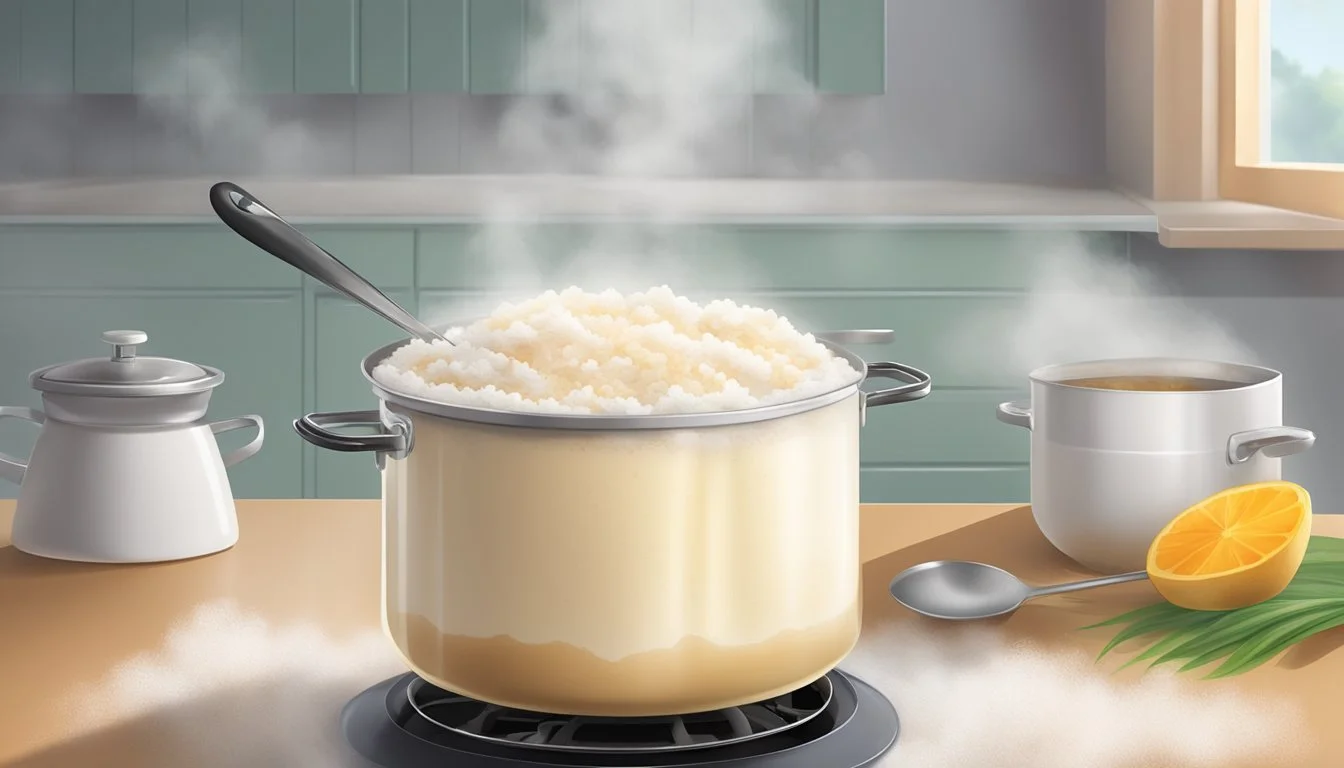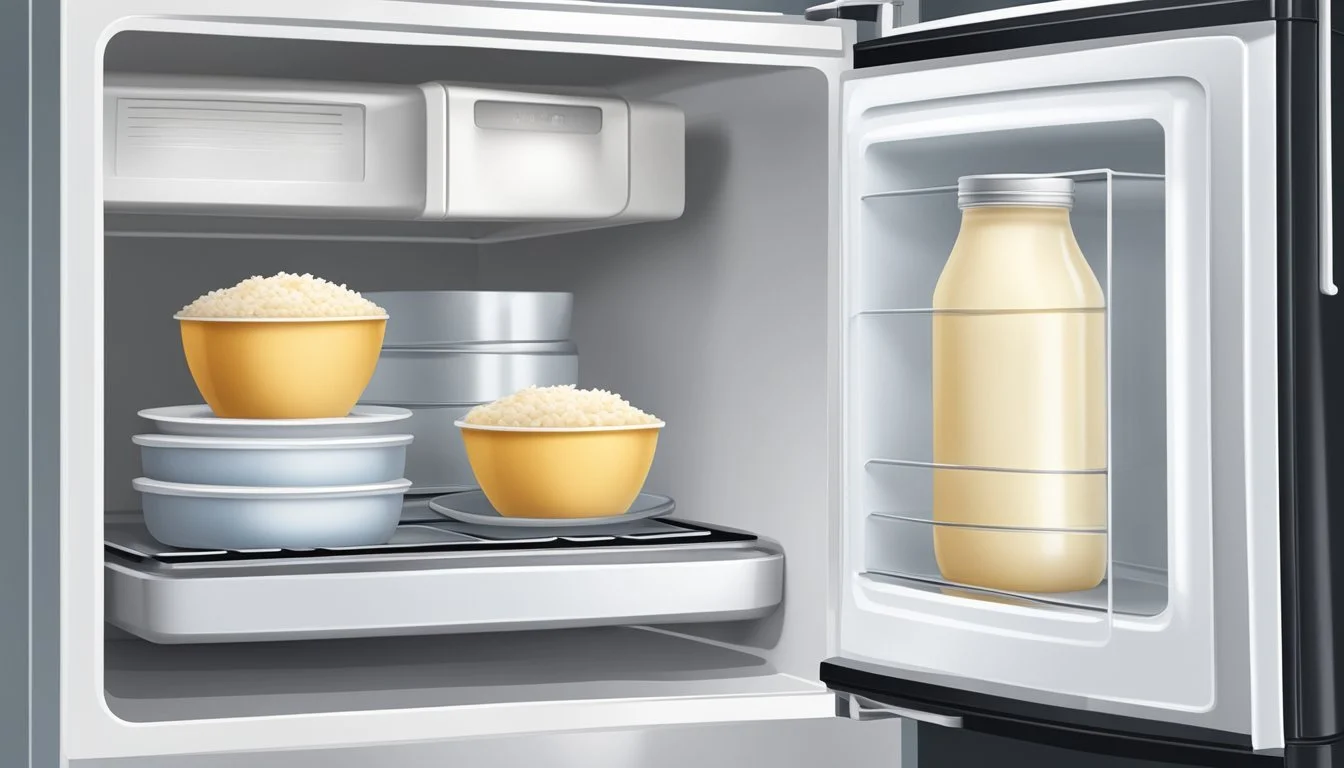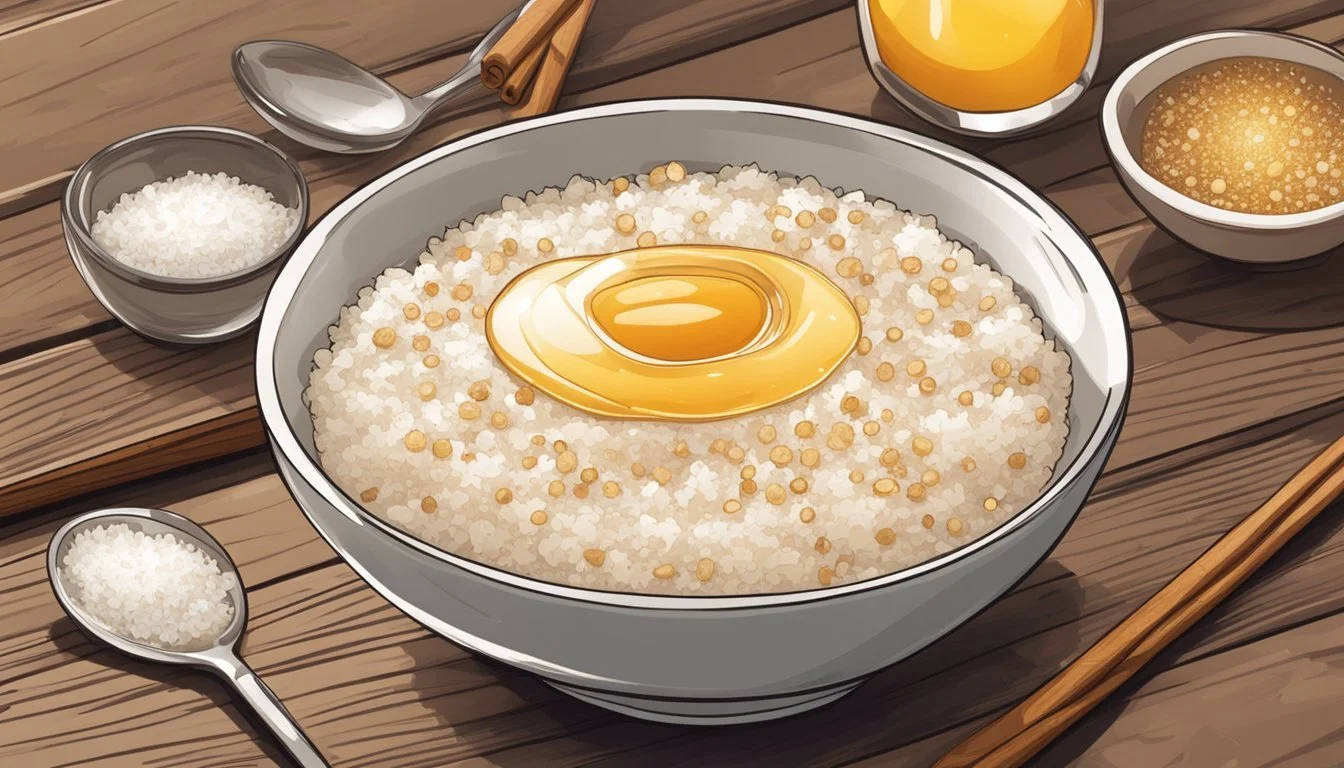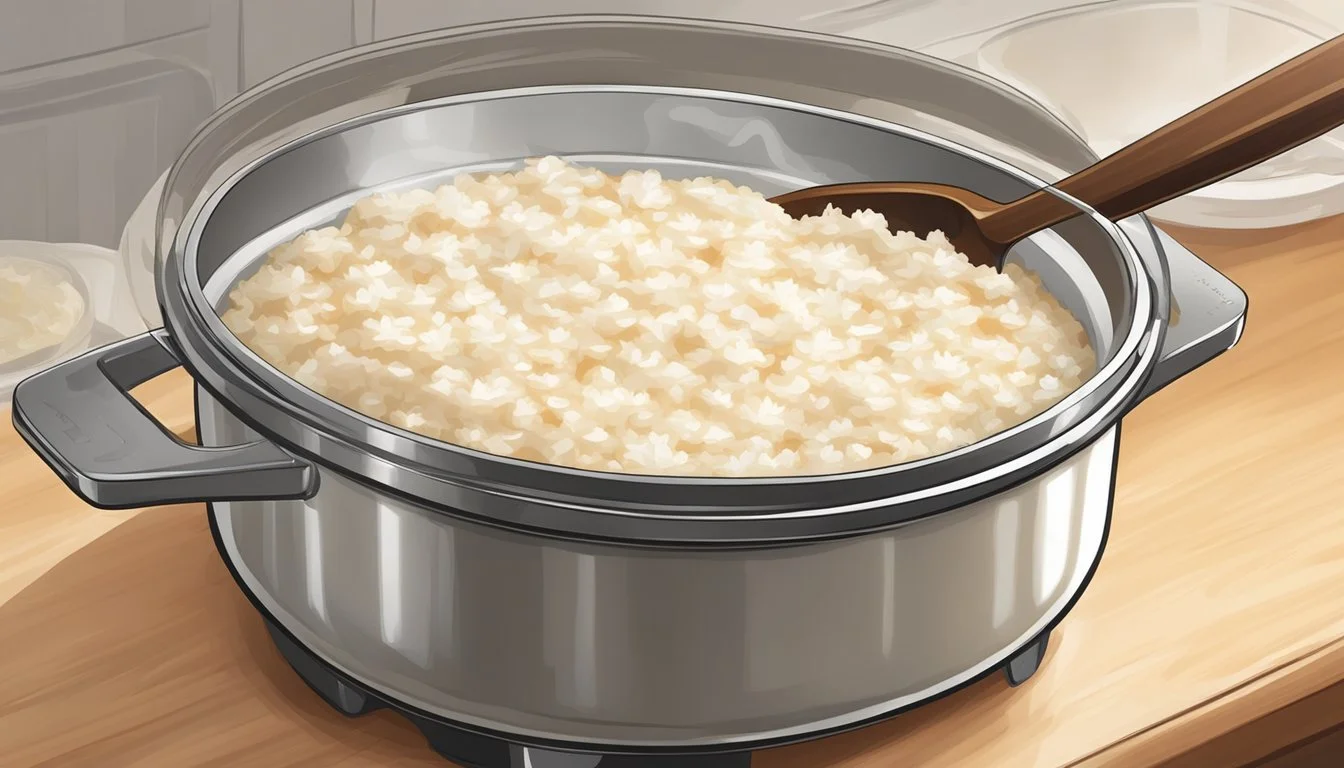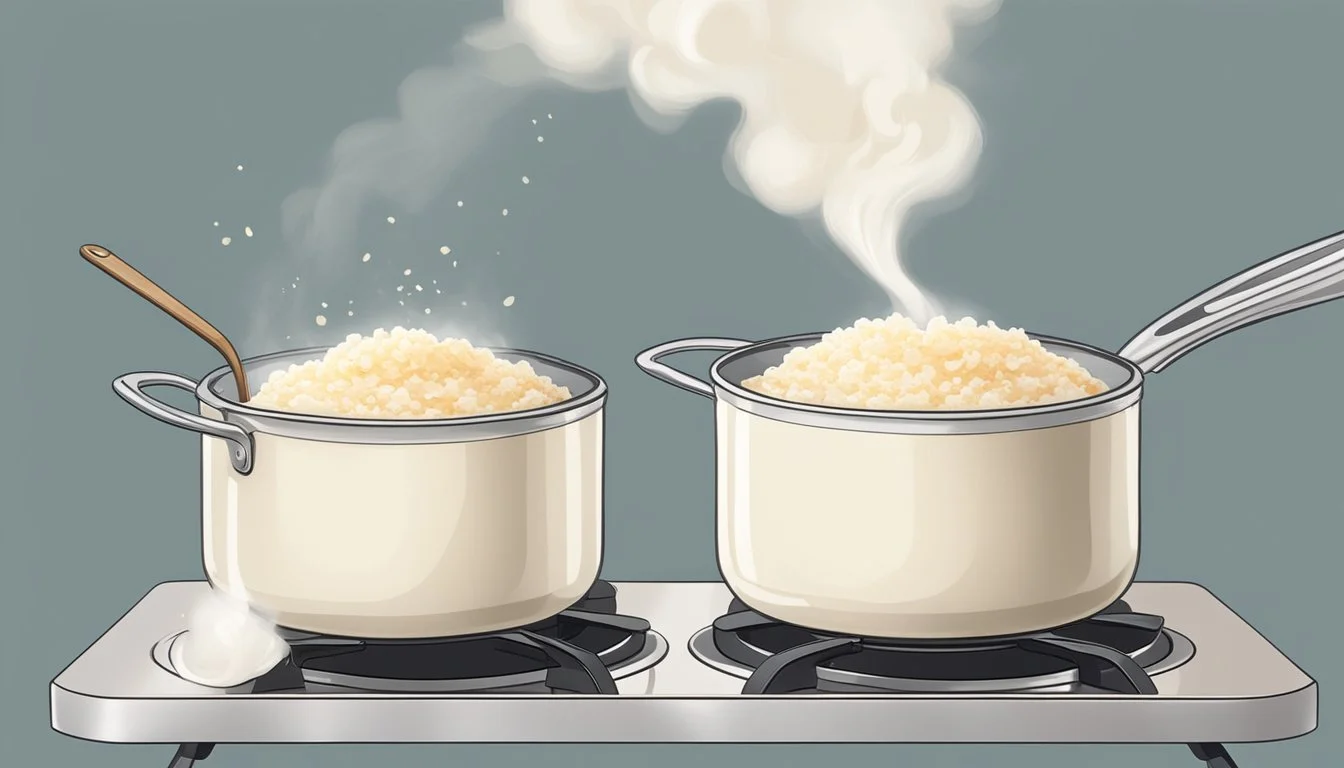Best Way to Reheat Coconut Rice Pudding
Ensuring Creaminess and Flavor Retention
Coconut rice pudding, with its delicate blend of creamy texture and subtle tropical flavor, is a delight for the senses. However, the challenge many face is reheating this dessert without losing its luscious creaminess or the nuanced coconut taste that characterizes it. Finding the best way to reheat coconut rice pudding thus becomes essential to enjoy leftovers that are just as appealing as when they were first prepared.
To ensure the coconut rice pudding retains its quality during reheating, careful attention must be paid to the method and conditions under which it is warmed up. The goal is to achieve an even distribution of heat that gently warms the pudding without causing the coconut milk to separate or the rice to become overly dry. Keeping the pudding's moisture intact is crucial, and there are several techniques that can help achieve this, ensuring that the pudding remains as satisfying as ever.
Overview of Coconut Rice Pudding
Coconut rice pudding combines the comforting texture of traditional rice pudding with the tropical taste of coconut. It's a dessert that can be enjoyed in various dietary contexts, offering a satisfying sweetness and a creamy consistency.
Defining Coconut Rice Pudding
Coconut rice pudding is a sweet dessert made by cooking short-grain rice—such as arborio rice—until it is soft and then mixing it with coconut milk to create a creamy texture. The addition of coconut flakes often enhances its flavor and adds a pleasant texture. This dessert can be served either warm or cold, making it versatile for different seasons and preferences.
Main Ingredients:
Short-grain rice (e.g., arborio rice)
Coconut milk
Sweeteners (such as sugar or maple syrup)
Optional: Coconut flakes for garnish
Health and Dietary Considerations
When considering health and dietary preferences, coconut rice pudding is particularly notable for being naturally dairy-free, making it suitable for vegan diets when made with plant-based sweeteners. Its main ingredient, coconut milk, is lauded for offering a rich source of vitamins and minerals while also being lactose-free. Moreover, making this dessert with whole-grain rice can add a nutritious element by providing more fiber.
Dietary Benefits:
Vegan: Made without animal products
Dairy-free: Suitable for lactose intolerance
Gluten-free: Naturally without gluten when made with gluten-free ingredients
Substituting traditional dairy with coconut milk not only caters to those following a vegan lifestyle but also provides a distinct coconut flavor that can turn a simple rice pudding into an exotic treat.
Selecting Ingredients for Creaminess and Flavor
The success of reheating coconut rice pudding lies in initially selecting the right ingredients to maintain its creaminess and coconut flavor. Ensuring the right choices from the types of rice to the sweeteners will result in a dish that can withstand reheating without losing its signature taste and texture.
Choosing the Right Type of Rice
The foundation of a creamy rice pudding is the type of rice used. Short-grain rice, such as Arborio or sushi rice, is ideal because of its high starch content. This starchiness is pivotal as it lends a creamy texture to the pudding, which stands up well to reheating.
The Role of Coconut in Flavor and Consistency
Coconut milk is the backbone that imparts the distinct coconut flavor and contributes to the creamy consistency. Canned coconut milk is preferable for its dense, rich texture, as opposed to carton versions, which may be too watery. For a robust coconut flavor, full-fat coconut milk should be used.
Dairy and Non-Dairy Milk Options
To further enhance creaminess, the addition of dairy milk can be considered. Using whole milk offers a rich, velvety dimension to the rice pudding. Alternatively, almond milk serves as a good non-dairy substitute that complements the coconut milk and retains the creamy consistency upon reheating.
Sweeteners and Flavor Enhancers
Sweeteners such as white sugar or brown sugar are used not only to sweeten but also to affect the texture. Brown sugar can introduce a subtle caramel note. Vanilla extract and a pinch of salt are crucial flavor enhancers, increasing the flavor complexity of the dish, while a hint of cinnamon adds warmth and spice, accenting the coconut flavor.
By selecting the appropriate rice, coconut milk, additional milk options, and fine-tuning the sweetness and flavors, one ensures the reheated coconut rice pudding remains creamy and flavorful.
Proper Storage Techniques for Coconut Rice Pudding
Proper storage is crucial to maintaining the creaminess and coconut flavor of rice pudding. By following specific techniques, you can ensure your dessert remains delicious for subsequent servings.
Storing Freshly Made Rice Pudding
Once you've cooked the rice pudding, it should be allowed to cool to room temperature before storage. This prevents condensation inside the container which can affect texture. For optimal freshness, store the rice pudding in the refrigerator within two hours of cooking. Use an airtight container to keep the pudding moist and to prevent it from absorbing other odors from the fridge. If an airtight container isn’t available, you can cover the top layer with plastic wrap, pressing it gently onto the surface of the pudding before sealing it with a lid.
Cool time: Before refrigerating, allow to cool at room temperature.
Container: Transfer to an airtight container or use plastic wrap and a lid.
Fridge time: Consume within 3-5 days for best quality.
Freezing and Thawing Instructions
If you need to store coconut rice pudding for an extended period, freezing is an effective option. After the pudding has cooled, portion it into serving sizes. Place each portion in an airtight container or a heavy-duty freezer bag. To thaw, transfer the needed amount of rice pudding to the refrigerator and let it slowly defrost overnight. When reheating, you may need to add a splash of milk to bring back the pudding's creaminess.
Portion: Divide pudding into preferred serving sizes.
Freeze: Use airtight containers or heavy-duty freezer bags. Label with date.
Thaw: Defrost in the refrigerator overnight for best results.
Reheating tip: Add milk to restore creaminess if necessary.
By adhering to these storage methods, your coconut rice pudding will retain its delicious quality, ready for you to enjoy at a later time.
Best Reheating Methods to Maintain Quality
To ensure coconut rice pudding retains its creaminess and flavor when reheated, the method selected is crucial. Heat distribution and moisture content play vital roles in the results.
Stovetop Reheating Technique
One can reheat coconut rice pudding on the stove by transferring it to a saucepan and adding a small amount of coconut milk or water. This reintroduces moisture and prevents drying out. They should then gently warm the pudding over medium heat, stirring constantly to promote even heat distribution and to avoid burning. Once the pudding reaches a simmer, they should reduce the heat to low and continue stirring until it is thoroughly warm.
Using a Microwave for Quick Reheating
For quick reheating, the microwave can be an effective tool if used with care. Portion the rice pudding into a microwave-safe dish, add a splash of coconut milk or water for moisture, and cover with a damp paper towel. Heat in short intervals of 20-30 seconds, stirring in between to avoid hot spots and achieve even reheating. This attention to detail will help maintain the pudding’s creamy texture.
Oven-Based Reheating Method
Reheating in an oven can gently bring coconut rice pudding back to the right temperature. Preheat the oven to 300°F (150°C), place the pudding in an oven-safe dish, and stir in a bit of coconut milk or water to keep it moist. Cover the dish with aluminum foil to trap in moisture and heat steadily. One should check and stir the pudding periodically, allowing it to heat all the way through.
Adjusting Texture and Consistency During Reheat
When reheating coconut rice pudding, one's goal is to maintain its original creamy texture while preventing any curdling or separation that could compromise the dish's consistency.
Avoiding Curdling and Separation
To avoid curdling and separation, one should gently reheat the coconut rice pudding over low heat. High temperatures can cause the proteins in the milk to coagulate unevenly, leading to a grainy texture. It's critical to use a consistent, low temperature and to avoid boiling.
Heat setting: Low
Avoid: Boiling
Adding Liquids to Regain Creaminess
As rice pudding cools, it often absorbs excess liquid, leading to a firmer texture upon reheating. Adding a splash of milk can help return the pudding to its creamy consistency. This should be done gradually, starting with a small amount, as one can always add more if needed.
Start with a small splash of milk
Add more as necessary
Aim for a creamy consistency
Stirring Techniques to Preserve Texture
One should stir frequently while reheating to help distribute heat evenly throughout the pudding, which prevents overcooking and helps maintain a smooth texture. Use a spoon or spatula to make sure the bottom doesn't stick, ensuring the heat affects the pudding uniformly.
Stir frequently: Prevents sticking and overcooking
Use a spoon or spatula
Aim for even heat distribution
Serving Suggestions and Additional Toppings
Once you have successfully reheated your coconut rice pudding to perfection, enhancing its creamy texture and rich coconut flavor is key. Serving it with the right garnishes and at the ideal temperature can elevate the dessert from comforting to gourmet.
Garnishes to Enhance the Flavor
To intensify the coconut rice pudding's flavor, consider adding a variety of garnishes. Toasted coconut flakes add a delightful crunch and reinforce the coconut profile. For a sweet and sticky element, drizzle with caramel sauce. Citrus enthusiasts may sprinkle lemon zest for a fresh tang, which complements the sweetness excellently.
Pairing with Fruits and Nuts
Fruit pairings can introduce a refreshing contrast to the rich pudding. Berries, pineapple chunks, and banana slices offer a balance of tartness or sweetness. For a richer texture, integrate a handful of nuts such as almonds or pecans. Raisins soaked in rum or simple syrup can also be mixed in, adding a note of warmth to each bite.
Best Practices for Serving Temperature
It's imperative to serve coconut rice pudding when it's warm to highlight its creamy consistency. If it’s too hot, the subtler flavors may be lost, and if it's too cold, the pudding can become too thick. Aim for a comfortable warmth that allows the depth of the coconut and the chosen toppings to shine through.
Safety and Food Handling
When reheating coconut rice pudding, understanding and applying proper safety and food handling measures are paramount in preventing food poisoning and ensuring the dish reaches the proper doneness.
Preventing Food Poisoning
Storing: Coconut rice pudding should be stored in the refrigerator within two hours of cooking to minimize the risk of bacterial growth. It should be placed in an airtight container and can be kept for up to 5 days. If the pudding has been left at room temperature for longer than two hours, it should be discarded to prevent the risk of foodborne illness.
Reheating: To safely reheat coconut rice pudding, one should ensure that it reaches an internal temperature of 165°F (74°C), which effectively kills potentially harmful bacteria. Utilizing a food thermometer is the best way to check this.
Best Practices for Checking Doneness
Visual and Tactile Checks:
The pudding should be steaming throughout, indicating it has been warmed enough.
A spoon or fork can be inserted into the center of the pudding; if it feels hot to the touch when removed, the pudding is likely reheated properly.
Using a Food Thermometer:
Insert the thermometer into the center of the pudding; it should read 165°F (74°C).
For an even check, test multiple areas of the pudding.
Reminder: If a paper towel is used to cover the pudding during reheating, ensure it's microwave-safe to prevent any contamination.
Common Questions and Troubleshooting
In this section, readers will find essential tips for reheating coconut rice pudding, solutions to common reheating issues, and answers to frequently asked questions to ensure the dessert maintains its creamy texture and coconut flavor.
Tips for Perfect Coconut Rice Pudding
Temperature Control: It is important to reheat the pudding gently to avoid burning or uneven heating. Coconut rice pudding should be warmed at a moderate temperature, preferably in an oven set to 350°F (180°C).
Milk Addition: To preserve creaminess, adding a splash of milk or coconut milk before reheating can help maintain the pudding's moisture.
Spice Management: When reheating, it's crucial to preserve the aroma of spices like cinnamon or nutmeg. Covering the pudding with foil can assist in trapping the scents within the dish.
Solving Problems During Reheating
Preventing Curdling: If the coconut rice pudding contains eggs, they must be careful to avoid curdling. A low and slow reheating approach is recommended.
Consistency Checks: Stirring the pudding a few times during the reheating process helps achieve an even consistency and prevents it from becoming too thick or thin.
Avoiding Dryness: If the pudding appears dry after reheating, one can mix in a bit more coconut milk to restore its creamy texture.
FAQs and Expert Advice
Retaining Coconut Flavor: For individuals concerned about losing the coconut essence, one should ensure the product used for reheating—whether milk or cream—complements the coconut base of the pudding.
Cold Pudding Concerns: If the coconut rice pudding is straight from the fridge, it may require a longer reheating time. It's advised to allow it to sit at room temperature for a few minutes before reheating.
Frequently Asked Questions Expert Answers How do I avoid overcooking my pudding? Heat gradually and check the pudding frequently. Can I reheat coconut rice pudding in the microwave? Yes, but do so in short intervals to prevent hot spots. My pudding has lost its smooth texture, what can I do? Whip in a small amount of coconut milk to restore creaminess.
Recipe Adjustments: Sometimes, the founder or editor of a recipe may suggest specific reheating instructions for their coconut rice pudding recipe. It's prudent to consult these before proceeding.
Closing Thoughts and Recipe Insights
Preserving the creamy texture and rich coconut flavor of coconut rice pudding when reheating is crucial to maintain its standing as a family favorite. Whether one opts to relish it for breakfast or as a sweet treat, attention to detail can make all the difference.
For those reheating pudding made with granulated sugar, Calrose rice, or any long-grain variety, a medium saucepan is often their vessel of choice. Gentle heat is key—they aim to warm the pudding slowly to prevent separation of ingredients that could lead to a loss of creaminess. Coconut milk's propensity to separate under high heat necessitates a careful, controlled warm-up.
Recommended reheating steps include:
Placing the coconut rice pudding in a medium saucepan.
Adding just a small splash of milk to keep the pudding moist.
Stirring the pudding occasionally, ensuring even heat distribution.
Those reheating should also consider:
Method Heat Setting Duration Stovetop Low to Medium 5-10 minutes Oven 350°F (Preheated) 20-25 minutes
To recapitulate, the connoisseur of creamy coconut rice pudding pays close attention to the reheating method. They prefer low heat and patience over high temperatures and haste, knowing that this approach preserves the dessert's signature creaminess and coconut flavor.

